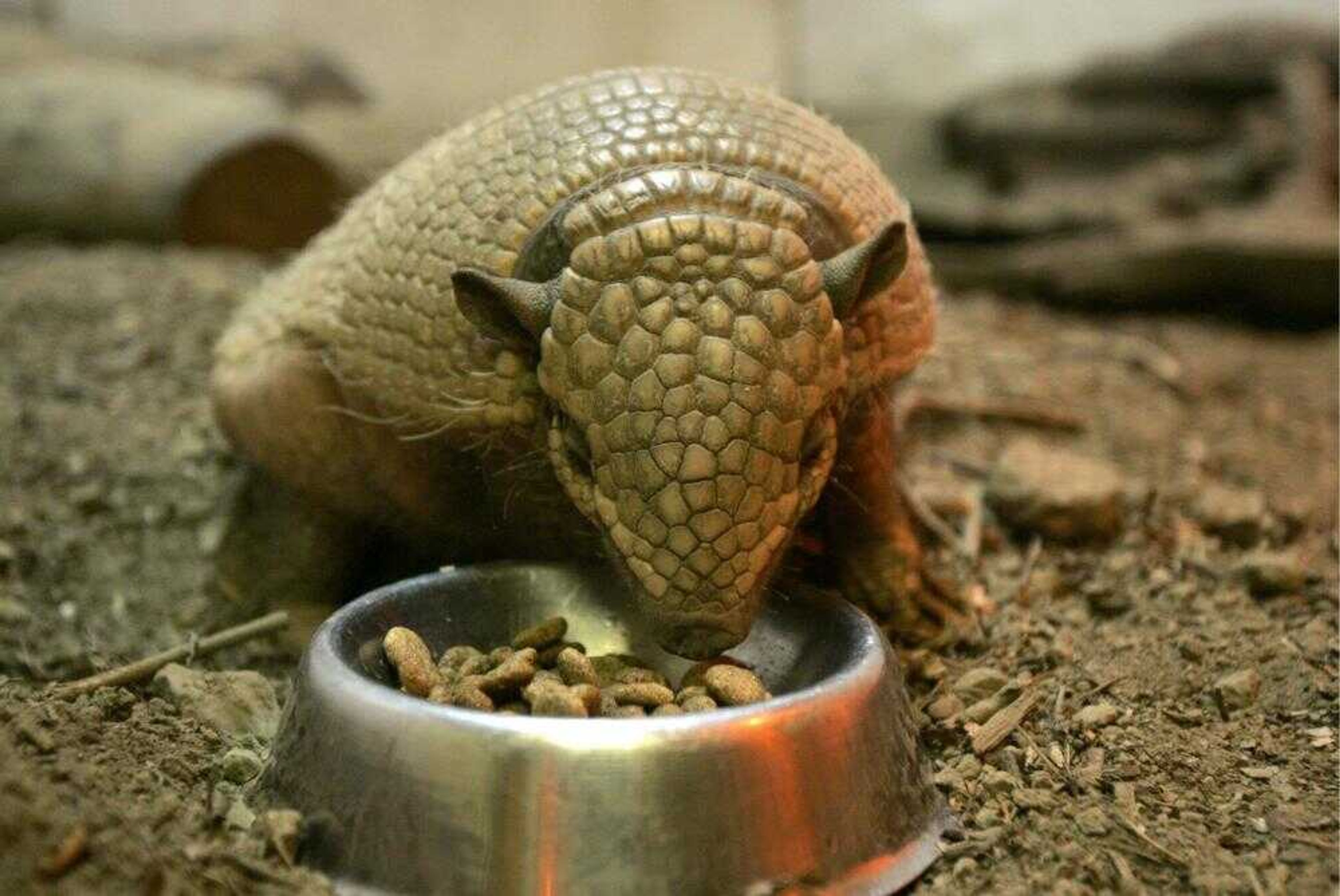St. Louis Zoo's new nutrition center soups up how it feeds its animals
ST. LOUIS -- Right now, the pickiest eaters at the St. Louis Zoo just might be the cheetahs. Change their meat supplier, or even wash their food dishes with a new detergent, and they can become downright finicky, turning up their noses at mealtime. With 18,000 mouths to feed every day -- that's including about 11,000 insects on exhibit -- one of the nation's top zoos says a new nutrition center that opened Thursday will keep mealtimes from becoming, well, a real zoo...
~ The zoo now has a $5.3 million, state-of-the-art facility to feed 18,000 mouths every day.
ST. LOUIS -- Right now, the pickiest eaters at the St. Louis Zoo just might be the cheetahs.
Change their meat supplier, or even wash their food dishes with a new detergent, and they can become downright finicky, turning up their noses at mealtime.
With 18,000 mouths to feed every day -- that's including about 11,000 insects on exhibit -- one of the nation's top zoos says a new nutrition center that opened Thursday will keep mealtimes from becoming, well, a real zoo.
The St. Louis Zoo already had orderly procedures in place for feeding its animals, but it now has a $5.3 million, state-of-the-art center focused on animal nutrition.
Visitors can watch food being prepared at the Orthwein Animal Nutrition Center through large glass windows, though the center itself isn't open to the public.
Days begin at 5 a.m.
A staff with four full-time and two part-time workers begins its days around 5 a.m., zoo nutritionist Ellen Dierenfeld said.
They prepare about 3,000 pounds of food each day in a kitchen.
The center has plenty of space for food storage, including a walk-in freezer half the size of a basketball court that holds everything from frozen fish for penguins to frozen rabbits for carnivores. Live prey is not kept at the facility.
Animal health keeper Jamie Nicoloff stood at one food work station, weighing individual portions of raw horse meat for those picky cheetahs, and packing the meat so it doesn't leak when it's transported elsewhere in the zoo.
"It's very glamorous," she joked about her work.
A 40-by-16-foot refrigerator holds fresh fruits and vegetables, and a dry storage area keeps bagged feeds and pellets. Three 4.5-ton grain bins are loaded by trucks from outside of the building. Buckets are placed under a chute to pour out smaller amounts of feed as it's needed.
Along one wall, there are large boxes of human breakfast cereals -- Kix, Cheerios and Chex. These serve as "scatter foods," Dierenfeld said, that can be sprinkled around an animal's habitat, allowing an animal like an ape to forage for some of its food.
Also spotted on the shelves were marshmallows and Oreo cookies.
Nutrition studies
Dierenfeld said the items are a rare treat for animals, used if an animal is training to learn a new skill, like commands that help keepers care for elephants' feet.
Gerber powdered baby food, like mixed grains that can be combined with milk, is also in stock. "We use baby food to transition youngsters onto solid food," Dierenfeld said.
The center will also allow the zoo to do plenty of research related to animal nutrition.
Gardens outside have been planted for studies to compare how cultivated fruits and vegetables compare with the nutrients in wild varieties.
Another study will look at the food intake of horned guans. The birds have been eating red-colored feed pellets, but not yellow ones, though nutritionally they're the same, Dierenfeld noted.
The center allows the zoo to store food in bulk, controlling its quality and saving on expenses like transportation costs. Even so, the zoo's food bill runs about $1 million a year, she said.
"Our grocery list is a little different from the typical one," Dierenfeld said.
Connect with the Southeast Missourian Newsroom:
For corrections to this story or other insights for the editor, click here. To submit a letter to the editor, click here. To learn about the Southeast Missourian’s AI Policy, click here.








